Related Research Articles

Theodore Sedgwick was an American attorney, politician and jurist, who served in elected state government and as a Delegate to the Continental Congress, a U.S. Representative, and a United States Senator from Massachusetts. He served as the fourth Speaker of the United States House of Representatives. He was appointed to the Massachusetts Supreme Judicial Court in 1802 and served there the rest of his life.

The American Anti-Slavery Society was an abolitionist society founded by William Lloyd Garrison and Arthur Tappan. Frederick Douglass, an escaped slave, was a key leader of this society who often spoke at its meetings. William Wells Brown was also a freed slave who often spoke at meetings. By 1838, the society had 1,350 local chapters with around 250,000 members.

Henry Highland Garnet was an African-American abolitionist, minister, educator and orator. Having escaped with his family as a child from slavery in Maryland, he grew up in New York City. He was educated at the African Free School and other institutions, and became an advocate of militant abolitionism. He became a minister and based his drive for abolitionism in religion.
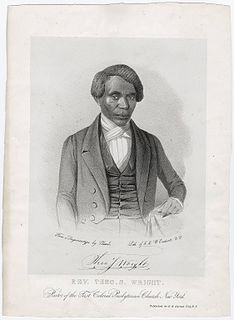
Theodore Sedgwick Wright (1797–1847), sometimes Theodore Sedgewick Wright, was an African-American abolitionist and minister who was active in New York City, where he led the First Colored Presbyterian Church as its second pastor. He was the first African American to attend Princeton Theological Seminary, from which he graduated in 1828 or 1829. In 1833 he became a founding member of the American Anti-Slavery Society, an interracial group that included Samuel Cornish, a black Presbyterian, and many Congregationalists, and served on its executive committee until 1840.

Gwendolyn Elizabeth Brooks was an American poet, author, and teacher. Her work often dealt with the personal celebrations and struggles of ordinary people in her community. She won the Pulitzer Prize for Poetry on May 1, 1950, for Annie Allen, making her the first African American to receive the Pulitzer.

Theodore Roosevelt III, known as Theodore Roosevelt Jr., was an American government, business, and military leader. He was the eldest son of President Theodore Roosevelt and First Lady Edith Roosevelt. Roosevelt is known for his World War II service, including the directing of troops at Utah Beach during the Normandy landings, for which he received the Medal of Honor.
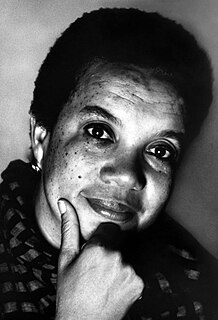
Marian Wright Edelman is an American activist for children's rights. She has been an advocate for disadvantaged Americans for her entire professional life. She is president emerita and founder of the Children's Defense Fund.
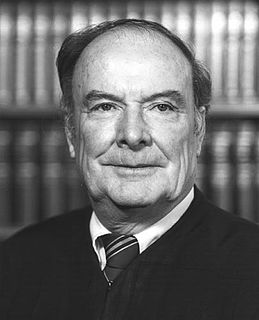
James Skelly Wright was a United States Circuit Judge of the United States Court of Appeals for the District of Columbia Circuit and previously was a United States District Judge of the United States District Court for the Eastern District of Louisiana.

The Boone and Crockett Club is an American nonprofit organization that advocates fair chase hunting in support of habitat conservation. The club is North America's oldest wildlife and habitat conservation organization, founded in the United States in 1887 by Theodore Roosevelt. The club was named in honor of hunter-heroes of the day, Daniel Boone and Davy Crockett, whom the club's founders viewed as pioneering men who hunted extensively while opening the American frontier, but realized the consequences of overharvesting game. In addition to authoring a famous "fair chase" statement of hunter ethics, the club worked for the expansion and protection of Yellowstone National Park and the establishment of American conservation in general. The Club and its members were also responsible for the elimination of commercial market hunting, creation of the National Park and National Forest Services, National Wildlife Refuge system, wildlife reserves, and funding for conservation, all under the umbrella of what is known today as the North American Model of Wildlife Conservation.

The Wesley United Methodist Church in Austin, Texas, United States, was founded in 1865, at the end of the American Civil War. Its original members were Austin-area freedmen, and it remains a predominantly African-American congregation. On March 4, 1865, the Reverend Joseph Welch, Presiding Elder of the Texas District of the Mississippi Mission Conference of the Methodist Episcopal Church, presided over the meeting at which Wesley was founded. This historical meeting was held in the basement of the old Tenth Street M. E. Church, South in Austin, Texas.

Jeremiah Alvesta Wright Jr. is a pastor emeritus of Trinity United Church of Christ in Chicago, a congregation he led for 36 years, during which its membership grew to over 8,000 parishioners. Following retirement, his beliefs and preaching were scrutinized when segments of his sermons about terrorist attacks on the United States and government dishonesty were publicized in connection with the presidential campaign of Barack Obama.
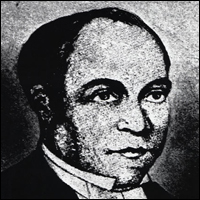
Peter Williams Jr. (1786–1840) was an African-American Episcopal priest, the second ordained in the United States and the first to serve in New York City. He was an abolitionist who also supported free black emigration to Haiti, the black republic that had achieved independence in 1804 in the Caribbean. In the 1820s and 1830s, he strongly opposed the American Colonization Society's efforts to relocate free blacks to the colony of Liberia in West Africa.

The Wright Brothers Medal was conceived of in 1924 by the Dayton Section of the Society of Automotive Engineers, and the SAE established it in 1927 to recognize individuals who have made notable contributions in the engineering, design, development, or operation of air and space vehicles. The award is based on contributed research papers.

Jane Cooke Wright was a pioneering cancer researcher and surgeon noted for her contributions to chemotherapy. In particular, Wright is credited with developing the technique of using human tissue culture rather than laboratory mice to test the effects of potential drugs on cancer cells. She also pioneered the use of the drug methotrexate to treat breast cancer and skin cancer.
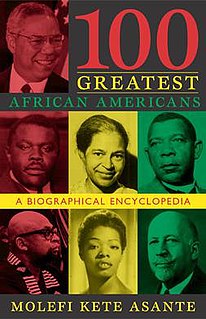
100 Greatest African Americans is a biographical dictionary of one hundred historically great Black Americans, as assessed by Temple University professor Molefi Kete Asante in 2002.

Chicago literature is writing, primarily by writers born or living in Chicago, that reflects the culture of the city.

Frank Boggs Wright Jr. was an American commercial artist whose career extended from the mid-1930s to the late 1990s. A native of Madison Heights, Virginia, he was perhaps best known for designing the ChapStick logo. A longtime resident of Lynchburg, Virginia he produced many logotypes and designs familiar to the area, including the current and two past City of Lynchburg logos and the Lynchburg Community Market banner. From 1944 through 1997, Wright's firm, Wright and Williams Studio, produced a prodigious amount of commercial art work for local and national businesses, most notably the Craddock-Terry Shoe Corporation, Lane Furniture Company, and First Colony Life Insurance Company.
J. Eugene Grigsby was a multimedia artist and educator. His primary mediums were printmaking and painting. Grigsby was also an influential educator for both college and high school students.
Phoenix Art Institute, originally located at 350 Madison Avenue in New York, New York, was an educational institution co-founded in 1925 by Franklin Booth with Lauros M. Phoenix. In 1944, it merged with the New York School of Applied Design for Women, becoming the New York Phoenix School of Design. In 1974, the New York Phoenix School of Design merged with the Pratt Institute to form the Pratt-Phoenix School of Design
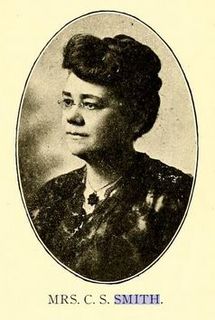
Christine Shoecraft Smith was an African-American community worker began her career as the assistant principal of the Alabama State Normal and Industrial School. She married an AME minister, who would become a bishop in the church and assisted him as the manager of the press organ of the Sunday School Union. She worked in many clubs and served as the 13th president of the National Association of Colored Women's Clubs (NACWC).
References
- ↑ Hembree, Michael F. (1996). "Wright, Theodore Sedgwick". Encyclopedia of African-American Culture and History. Retrieved September 30, 2019– via encyclopedia.com.
- ↑ Williams, Jr., Donald E (2014). Prudence Crandall's legacy : the fight for equality in the 1830s, Dred Scott, and Brown v. Board of Education . Middletown, Connecticut: Wesleyan University Press. ISBN 9780819574701.